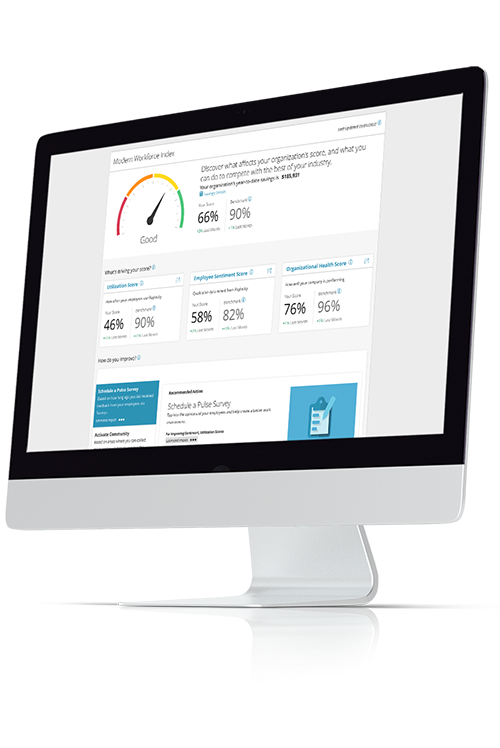
Crisis Communication: How to Steer Your Crew Through a Storm
Among the many lessons HR pros can take from the COVID-19 pandemic, the absolute necessity of a crisis communication plan ranks high on the list.
Whether it was COVID-19 locking down businesses or supply chain logjams restricting your sales, effective employee communication during a crisis is crucial. However, only 49% of companies have a dedicated crisis communication plan.
Are you one of them? If not, it might be time to critically examine your organization’s communication protocol.
Let’s dive into how your company can prepare for future crises with an effective communication strategy.
Key Takeaways
- Know what emergencies you could face — Being able to anticipate the crises your company could face will help you develop more effective plans.
- Establish your crisis communication leaders — Have a clear team with a well-known chain of command to lead your crisis communications.
- Aim for total transparency — Your employees will want to know as much as possible about the crisis, so you should always be as transparent as possible in your crisis communications.
What is Crisis Communication, and Why is it Important?
When something threatens to turn your world upside down, everyone at your organization needs to be on the same page.
A crisis communication plan is how an organization handles correspondence during emergencies and provides stability in otherwise uncertain times.
It’s a natural human reaction to respond to a crisis with panic and anxiety, but those aren't the behaviors we associate with strong leadership. Having a communications plan in place ahead of time helps mitigate those impulses.
Crisis communication plans tend to focus on internal communication, however you should also have a strategy for dealing with customers and clients. It’s likely they’ll also need reassurance and clarity.
What is the difference between crisis communication and crisis management?
Crisis communication is a part of crisis management. While crisis management is about managing all parts of an emergency, crisis communication focuses on keeping in touch with your employees and customers.
Crisis Examples: What do Businesses Need to be Ready for?
If we could predict exactly which crises we needed to prepare for, the whole business of dealing with emergencies would be much easier.
However, even without a crystal ball, it's possible to anticipate the sort of events that any business could encounter:
1. Pandemics
The COVID-19 pandemic was difficult for everyone, and we all hope the days of lockdowns are behind us. However, the silver lining of this catastrophic event is that it showed us how important it is for businesses to manage pandemic crises.
In theory, COVID-19 or other pandemics could force businesses to close again in the future. Think about how you responded to the initial outbreak of 2020 when drafting your crisis communication plan. What mistakes did you make? What lessons did you learn?
2. Technology Outages
One of the byproducts of COVID-19, of course, was that businesses became increasingly reliant on technology. As a result, many organizations today are vulnerable to outages, and for most companies, a technology failure would completely disrupt operations.
Maintain multiple digital channels available for internal communications so that your efforts to keep in touch aren’t also affected by an outage.
3. War and terror attacks
Some crises put issues like technology failures into perspective. The invasion of Ukraine, for instance, forced multinational companies to arrange flights out of the country for employees or reroute their supply chains.
Confident and clear communication in precarious times is critical to preventing panic amongst your staff. As part of your strategic workforce planning efforts, you should stay on top of the geopolitical risks they’re exposed to. It’s a fundamental part of your organization’s responsibility for the safety of its employees.
4. Product shortages
On the other end of the crisis communication spectrum are product shortages.
While a lack of chicken, which famously afflicted Kentucky Fried Chicken in 2018, isn’t a matter of life and death, these sorts of shortages can prevent your company from operating.
To get the show on the road again quickly, you need to be able to manage both internal and external communications. In KFC’s case, the company spun an otherwise embarrassing snafu into a humorous marketing campaign with a public apology published in local newspapers.
5. PR disasters
The rise of social media has meant that even the smallest PR misstep can soon develop into a major crisis. A leader who misspeaks in public, for instance, can trigger boycotts and tank stock prices.
Your crisis communication plan should include a strategy for dealing with these PR issues. Establish a channel for two-way dialogue between employees and leaders and have a plan for using social media to communicate your side of the story with customers.
Crisis Communication Best Practices: Six Steps You Should Take When Disaster Strikes
1. Anticipate potential crises
As we’ve just discussed, a robust corporate crisis communications plan should account for a variety of possible disruptions, such as natural disasters, security breaches, etc.
The COVID-19 pandemic forced many companies to close their doors suddenly, temporarily, and then permanently. For those that could continue operating, businesses had to work quickly to transition to a remote workforce or adopt health-related protocols to keep employees safe.
The ability to do all that quickly and effectively depended greatly on whether companies had infrastructure and processes already in place.
2. Identify a crisis communications team
A simple checklist of who to call in an emergency and who is doing what can make all the difference when minutes matter. Establish a chain of command and create a shared document with updated contact information for each person.
Of course, crises are, by their nature, unpredictable. Therefore, you should also have a backup team to lead your crisis communications if the original team isn't available.
3. Identify spokespeople and establish an approval process
You don’t want to wait to find out who is comfortable speaking with the media in the heat of the moment. Take time to identify your subject matter experts and hold crisis communication training sessions. Outline the ideal processes and figure out who will give the final approvals on all materials.
4. Set up notifications, monitoring systems, and channels for both internal and external communications
Leveraging announcements in a social collaboration and engagement tool like Paylocity’s Community is a great way to send important updates directly to employees’ mobile devices. Identify who will monitor social media, Community, PR Newswire, Google Alerts, and more.
5. Develop standard messaging and adjust as necessary
When a crisis hits your company, you don’t want to spend your time over a keyboard deliberating over whether you’ve chosen the right words. You should have a pre-approved set of messages sorted according to the type of crisis and audience they’re responding to.
Of course, these will probably need to be adapted during a crisis. You can prepare for this through training — create a range of specific scenarios and see if you can adjust the messages according to the emergency.
6. Communicate to your workforce transparently and often
In times of uncertainty, employees will want to hear from leadership and their direct managers. Your communications plan should include frequent and transparent messages from these key individuals through a variety of channels.
Video messages, for instance, are authentic and add a personal touch, helping leadership connect with a remote or disjointed workforce.
Learn How to Handle Crisis Communication and Make Your Company Steadfast in the Face of Adversity
When a crisis hits your organization, communication is key to making sure you come out unscathed. However, even the best-made crisis communication management strategy is useless without the right technology to support it.
Paylocity’s HR and payroll software includes Community, a social collaboration platform designed to quickly and easily reach employees. You won’t have to worry about managing multiple communication channels, and you can trust it to stay up during a crisis.
For more information about how Paylocity can improve communication throughout your organization, request a demo today.


?$Hero-Card$)
